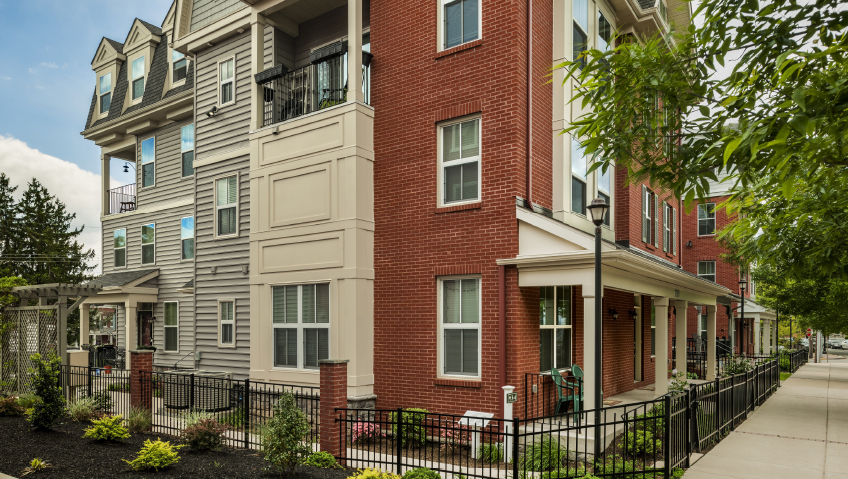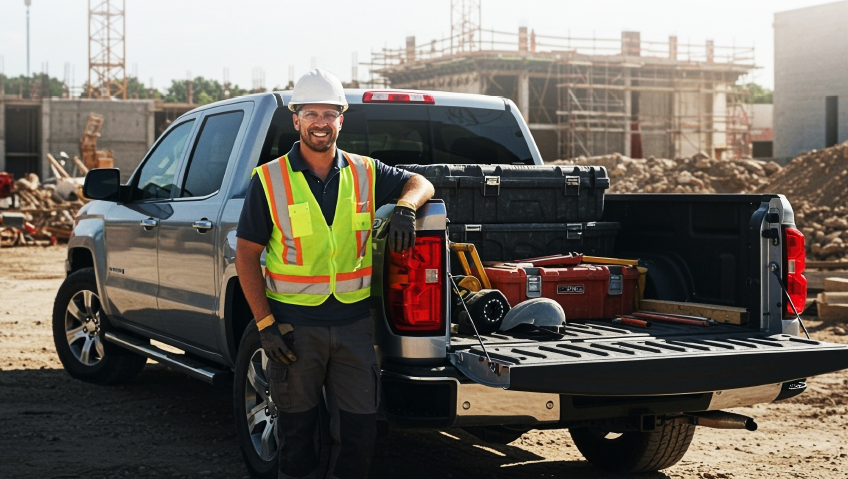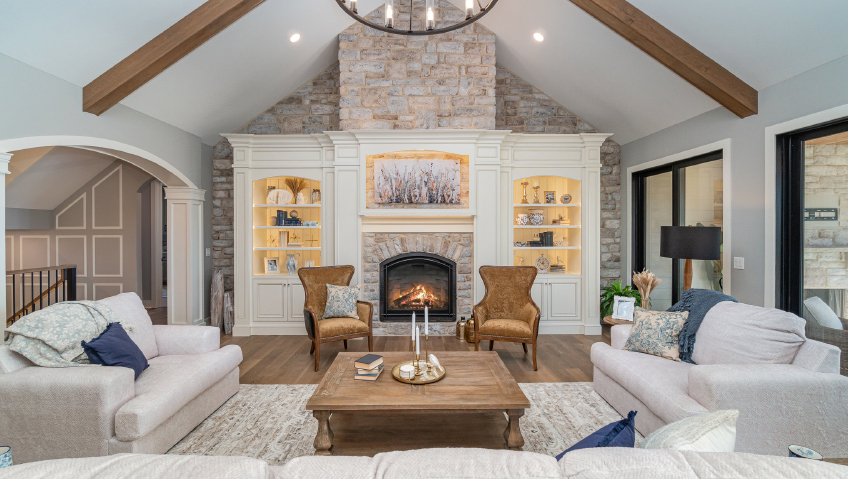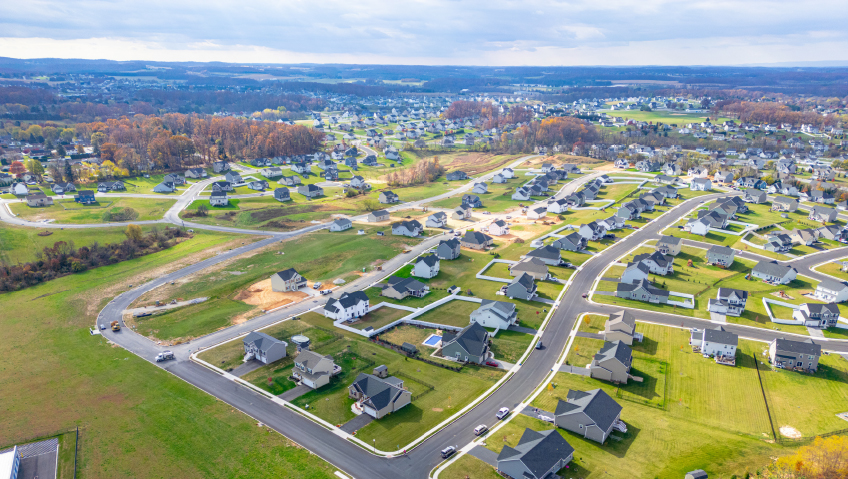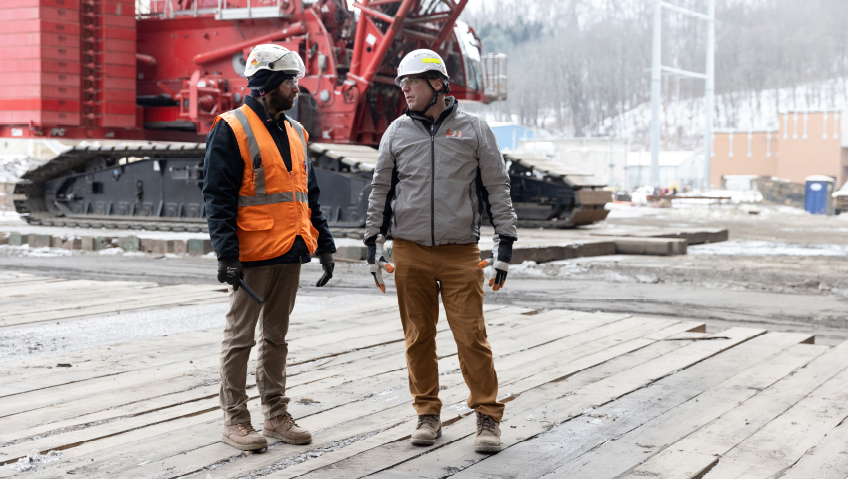Building in the historic Philadelphia suburbs of Montgomery, Delaware, and Chester Counties, Progressive New Homes’ developments are found in formerly industrial towns ripe for revival, including Media, Conshohocken, Norristown, Bryn Mawr, and Downingtown, among others. The communities appeal to young professionals, empty nesters and first-time homebuyers alike looking for a spacious home, a low-maintenance lifestyle, and a convenient location. Progressive’s reasonably priced housing options are proximate to train stations, restaurants, retail, and outdoor recreational areas. Remarkably, these objectives are achieved while simultaneously revitalizing older neighborhoods and providing greener alternatives to suburban sprawl.
As President and Chief Executive of Rouse/Chamberlin Homes in Exton, Pennsylvania for 15 years prior to forming Progressive New Homes, Sarah Peck has more than 30 years of expertise and accomplishments in all facets of building and developing new communities. A renowned expert on suburban infill development, she has built a solid reputation for ingenuity, commitment and a forward-thinking approach to real estate development and homebuilding during her career. Her philosophy underpins the company’s goal of responsible development that enhances neighborhoods while satisfying the growing demand for new housing options.
Progressive’s commitment to employing “smart growth” strategies in its development ventures reduces the need for cars which enables residents to save money and decrease carbon emissions by using less gas. Each community supports environmental sustainability with such things as on-site storm water infiltration, remediating brownfield lands, and building highly energy-efficient homes.
“I left Rouse/Chamberlin Homes in the early 2000s to start my own firm, wanting to focus on my original academic and professional roots in housing policy and urban planning,” says Peck. “I decided to focus on new construction infill housing in the older suburbs of Philadelphia, specifically selecting locations that were walkable to train stations and town centers.”
The investment of resources helps revitalize older, historic neighborhoods while meeting an underserved market seeking centrally located homes with lower maintenance. She adds that designing higher density, multiplex homes keeps costs down which, in turn, makes homeownership accessible for first-time homebuyers.
Another top priority for Progressive New Homes is building relationships and creating communities that are true neighborhoods. “A new home community is more than a physical development; it’s a social construct as well, providing an environment where people can have reliable neighbors whose company they enjoy,” Peck explains. “It’s gratifying to witness the way relationships grow in each community,” she says.
“I realized that the builder can play key a role in forging such neighborly relationships,” she adds. To that end, Progressive New Homes sponsors numerous homeowner gatherings throughout the development’s continuum so that by completion, residents are comfortable with one another to socialize or lean on one other in an emergency. A simple gesture of circulating a roster of residents’ names, contact information, and children’s ages can help a community form bonds well beyond the developer’s presence. Living in one of her own communities, Ms. Peck can personally attest to the power of this unique arrangement.
Although some developers may be concerned that this camaraderie could lead to organized efforts against them should concerns arise, she offers a solid counterargument: “If you build a good product, and you stay ahead of any concerns, and you’re constantly proactive and not afraid to address an issue, then it works well,” she says. “From there, you develop referrals and repeat buyers, and positive experiences within the community.”
With cost and availability driving concerns across the country, there has been an increased demand for homes within Progressive’s market. “We’re seeing the supply shortage cause prices to become unaffordable with multiple over-asking price bids on homes and waiving contingencies. First-time homebuyers are being priced out of the market, with zoning serving as the biggest impediment to adding more supply,” she asserts.
Peck’s specialty is working in unison with townships and local community groups to obtain the required zoning to create the type of housing today’s market demands. “Unfortunately, most builders don’t have the patience, time, or expertise to bring this kind of vision to fruition, she explains. “The best way to remedy the situation is for townships to provide zoning incentives to developers. This would encourage builders to take the risk of pursuing these unique housing concepts, thereby creating more new home communities geared toward this unmet consumer demand.”
Some of Progressive’s current developments include River Place, a 62-unit development along the riverfront in Conshohocken, Pennsylvania. This community is the redevelopment of a historic industrial site overlooking the Schuylkill River, offering a two-minute walk to commuter rail into downtown Philadelphia and a short walk to numerous restaurants and bars. The land plan consists predominantly of duplex townhomes with two-car tandem garages. With prices originally starting in the high $400s, this community has been popular with millennial singles and couples buying their first home. The site is nearly 75 percent sold out.
Arbor Place in Norristown, Pennsylvania offers 90 townhomes and flats on five acres of land, priced to appeal to first-time homebuyers. The project is part of a master plan including 204 garden apartments and 35 rental townhomes. The development was a partnership with the local Municipality of Norristown, which provided a rezoning and a tax abatement to help the new development succeed. “Since October of last year, Arbor Place has sold nearly 50 percent of the 90 homes in the community—the vast majority of sales being to first-time homebuyers,” says Peck. This reflects the development’s rare combination in the marketplace of garage townhomes from the mid $300s coupled with attractive below-market mortgages and closing cost assistance from preferred mortgage lenders.
While each project offers unique challenges, Peck is determined to succeed, particularly when it pertains to creating “missing middle housing.” This phrase, coined by planner Daniel Parolek, speaks to moderately high-density homes—often in multiplex configurations—that offer a good transitional land use between high-density apartments and conventional single-family homes, often in gaps found in older neighborhoods. “It’s a way of having more homes, and therefore more affordably priced homes,” Peck says. “You can get more homes in less land and lower your infrastructure cost per home.”
Such homes are more reasonably priced and still walkable to the amenities, such as transit, retail, and restaurants, that made that particular location desirable in the first place. There is also less maintenance, with little upkeep needed outside the home. Peck sees a lot of “very qualified, young, motivated people” in her market with strong credit, a good employment history, and savings, she adds. “Homeownership is still alive and well, but there’s a definite market for people who don’t want the yard, upkeep, and expense that brings. I would call it a niche in the market.”
Finding the proper sites takes creative thinking and planning. Typically, it’s an obsolete site sitting in the midst of, or on the edge of, an older neighborhood in a borough or town, near regional rail and commuting arteries, with public sewer and water available, and in good school districts—sites that are ripe for a housing development. Often, there is a problem in the existing neighborhood—such as flooding, unsafe road conditions, or environmental contamination—that a new development can help address.
Looking ahead, Peck is also hoping to help educate fellow builders about the designs that best suit missing middle housing needs and the strategies for obtaining the necessary entitlements to build them. “It’s difficult for builders to navigate the politics, community building, and time and tediousness it takes to get a rezoning,” she says. “But rezonings are the only way to develop this unique housing.”
Offering incentives and bonuses in relation to zoning, for instance, are ways to both entice builders and help towns obtain the developments they need, she adds. “It would be very helpful to see more of this kind of housing. If the towns could dangle those kinds of incentives in front of builders, and if builders can save time in getting their entitlements, they’ll go for it.”
Helping other developers and communities meet these goals will continue to be an area of great interest for Ms. Peck, particularly when it comes to first-time homebuyers. “It’s a personal passion of mine,” she says. “We spend a lot of time educating our clients on how to buy and how to be a homeowner. It’s a thrill to see these first-time homebuyers build equity and grow their families, as well as establish roots in the community.”

